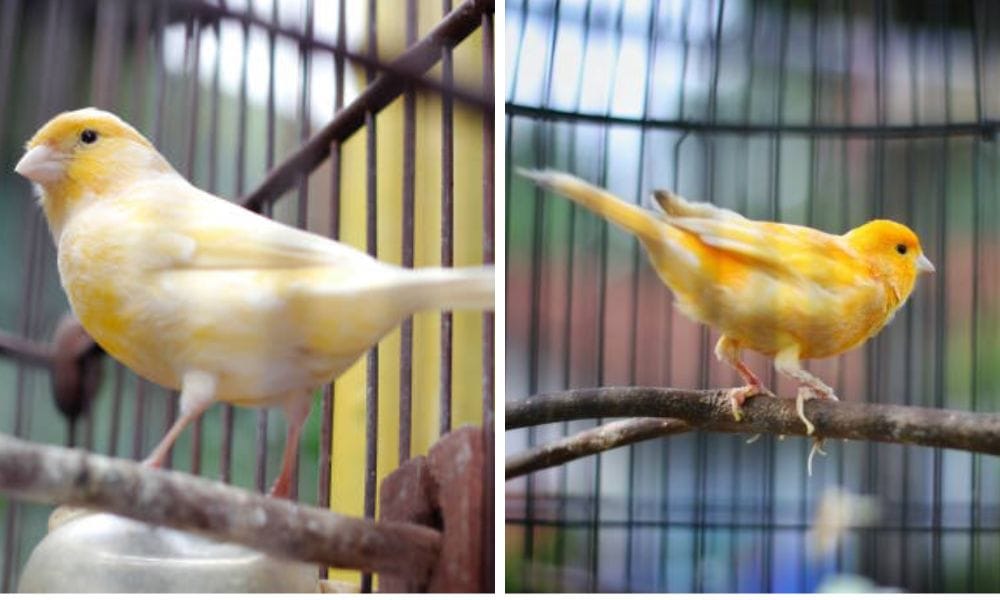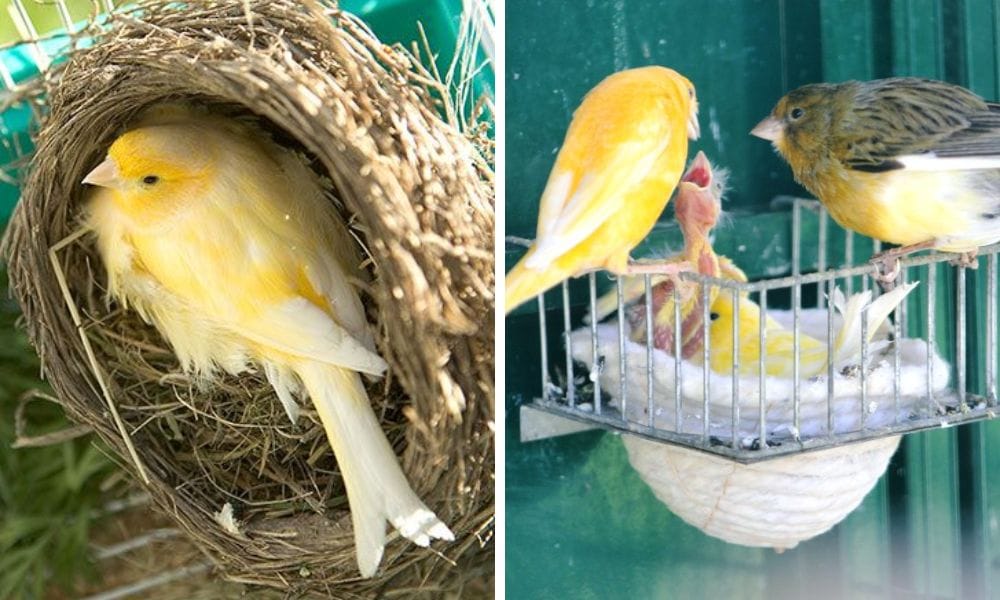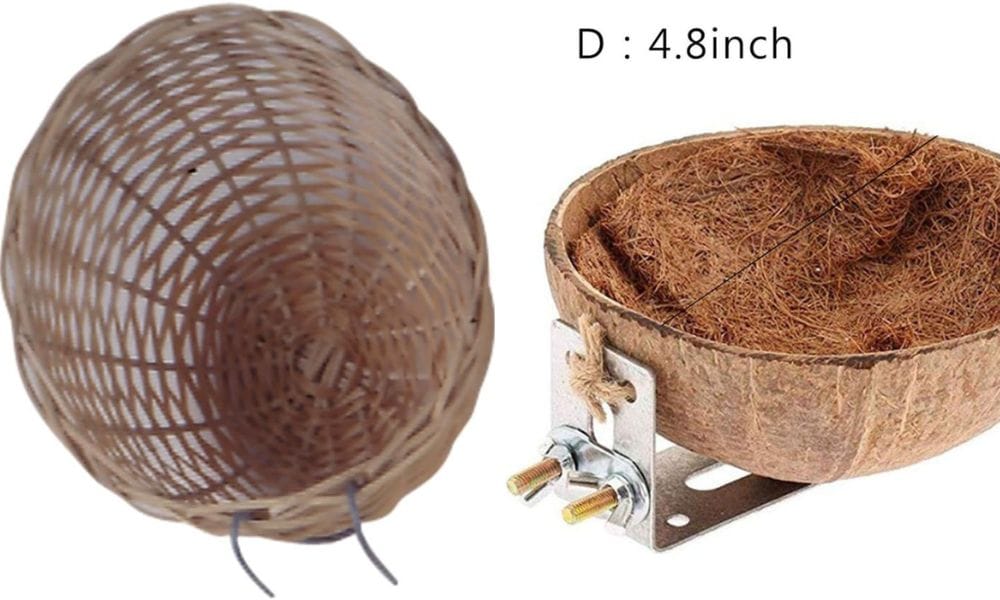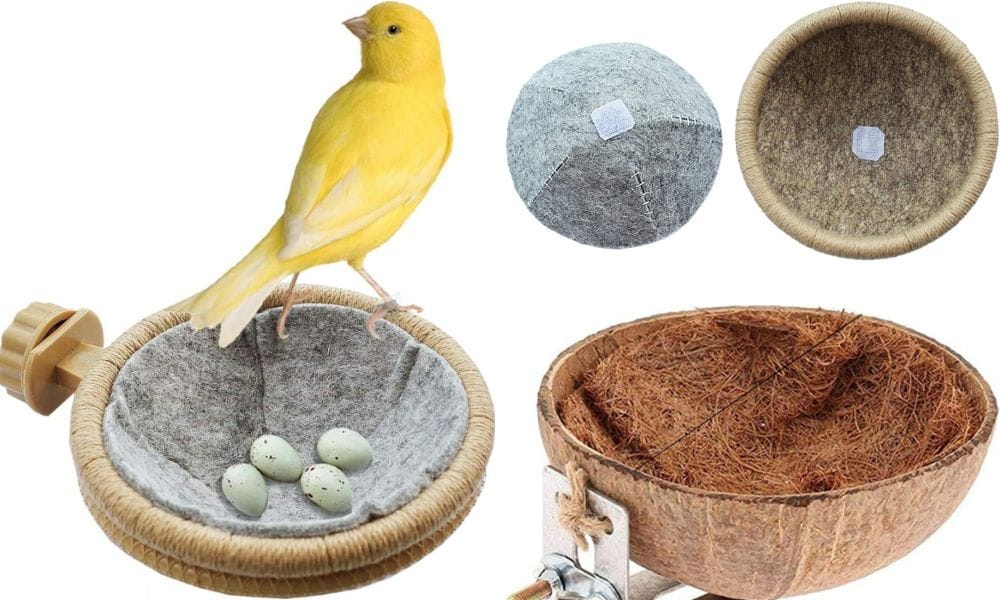Canary Nest Placement: Tips and Tricks for Optimal Results
Are you tired of having your canary eggs not hatch? Or worse, finding them smashed on the bottom of the cage? Well, we've got the inside scoop on the perfect nest placement for maximum results.

Key Takeaways:
- Understanding the importance of proper canary nest placement can significantly improve breeding results.
- Selecting the right type of nest and location within the cage is crucial for the comfort and safety of canaries.
- Regularly refreshing the nest and monitoring the birds' behavior are key to successful canary rearing.
Raising canaries can be a delightful experience, especially when you witness the birth and growth of new chicks. However, achieving optimal results in breeding these vibrant birds requires more than just providing food and water. One of the most critical aspects is the placement of the canary nest. This article will delve into the best practices for nest placement, ensuring your feathered family has the perfect environment to thrive.
The Ideal Canary Nest Selection
When it comes to choosing a canary nest, the options are plentiful. From bamboo to metal, each style offers different benefits. Bamboo nests are often sold as the preferred choice due to their natural look and feel, which canaries tend to accept readily. Metal nests, on the other hand, are durable and easy to clean. Regardless of the material, ensure that the nest is of the right size—typically around 4 inches in dia—to accommodate your canary family comfortably.

Strategic Location Within the Cage
The location of the canary nest within the cage is a decision that should not be taken lightly. A corner spot is usually ideal as it provides a sense of security and privacy for the birds. The height is also a factor; placing the nest at eye level can help you monitor the canaries without disturbing them. Remember to keep the nest away from the feeding area to prevent contamination with food and waste.
Understanding Canary Behavior
Observing your canaries' behavior is essential when determining the nest placement. Birds that feel safe and comfortable in their environment are more likely to breed successfully. If you notice your canaries are not accepting the nest, consider changing its location or style. Pay attention to their body language and vocalizations, as these can be indicators of their comfort levels.

The Importance of Nest Refreshing
Regularly refreshing the nest is crucial for the health of both adult canaries and their chicks. Remove old nesting materials and replace them with clean, soft materials that the birds can use to rebuild. This not only keeps the nest hygienic but also encourages natural nesting behaviors. Make sure to perform this task gently to minimize stress on the birds.
Monitoring and Adjusting
Breeding canaries is not a set-it-and-forget-it endeavor. Constant monitoring and adjusting are necessary to ensure the well-being of your birds. If you notice that the canaries are not using the nest or seem uncomfortable, don't hesitate to review your setup and make changes. Sometimes, a simple adjustment in the nest's location or the cage's setup can make all the difference.

Online Resources and Support
For additional tips and tricks, don't forget to utilize online resources. Search for forums and websites dedicated to canary care where you can add your comment, ask for advice, or read through reviews from other canary enthusiasts. These platforms are a treasure trove of information and can provide you with a full page of insights to save for future reference.
If you are looking for the best canary nest, we have put together our blog about top 3 canary nest below.

Summary
In summary, the proper placement of a canary nest is a pivotal factor in achieving successful breeding results. By selecting the right nest, positioning it strategically within the cage, understanding your birds' behavior, refreshing the nest regularly, and staying vigilant with monitoring, you can create an ideal environment for your canaries to flourish. Remember to use the wealth of information available online to further enhance your knowledge and skills in canary care.
FAQ Section
Q: What materials are best for canary nests? A: Canaries typically accept bamboo nests due to their natural feel, but metal nests are also a good option because of their durability and ease of cleaning. The choice depends on your and your birds' preferences.
Q: How often should I refresh the nest materials? A: It's recommended to refresh the nest materials regularly, especially during the breeding season. This could mean replacing the lining every few weeks or more frequently if it becomes soiled.
Q: What should I do if my canaries are not using the nest? A: If your canaries are not using the nest, review the nest's location, material, and the overall cage setup. Adjusting these factors can often encourage the birds to accept and use the nest.

